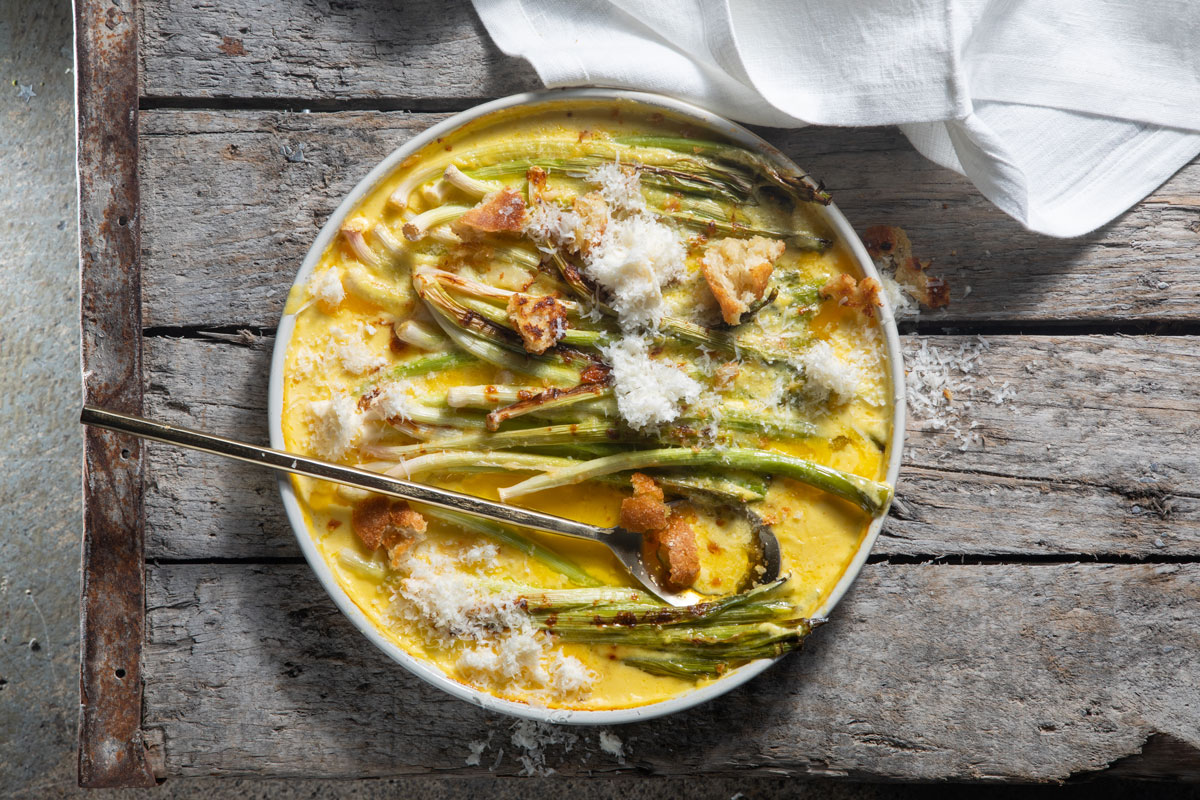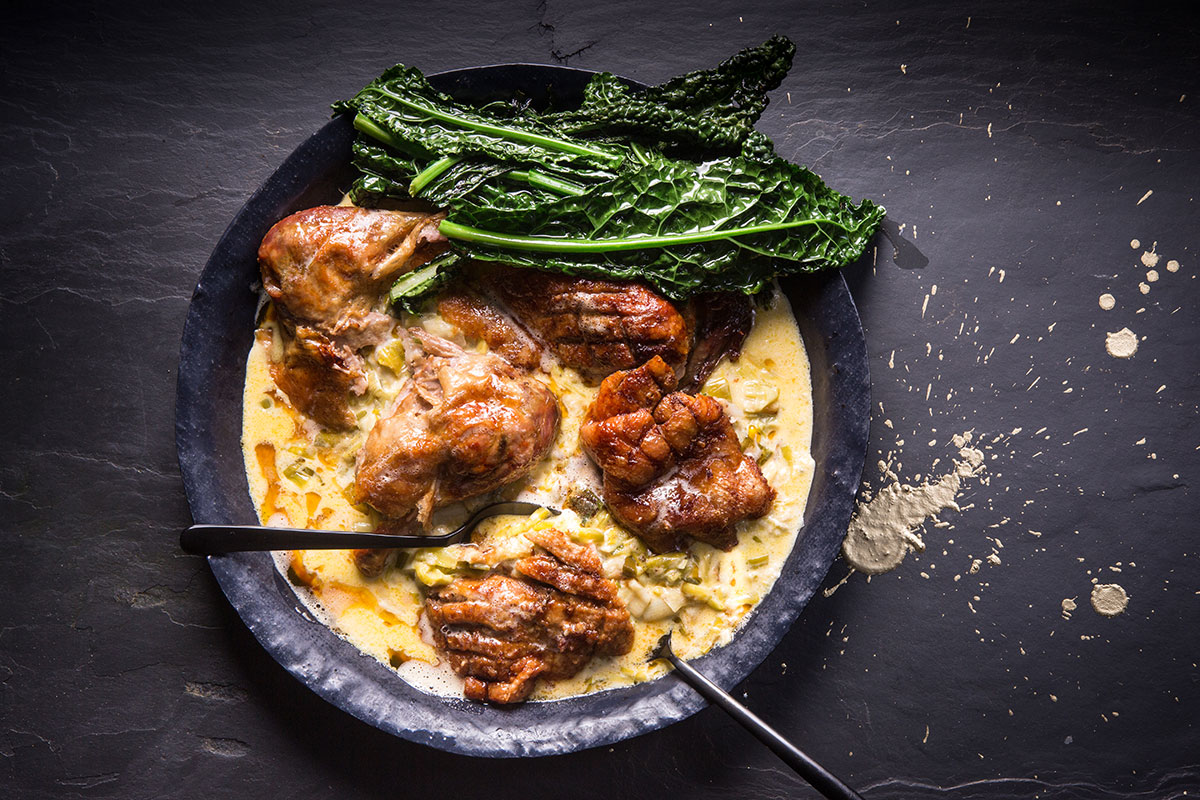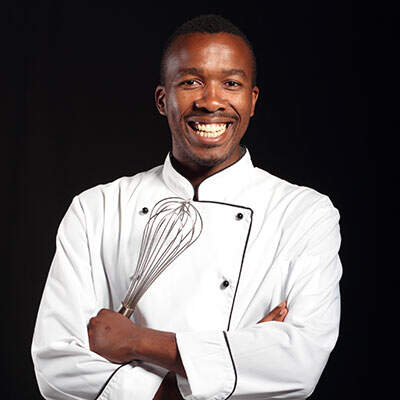Lentswe Bhengu: The pick of the veggie patch
Chef Lentswe Bhengu says caring for a food garden as a child sparked great respect for leeks, his most trusted ingredient in simple braai dishes and fancy dinner-party fare.
I spent a lot of time outside digging and playing in the garden when I was a child. Our backyard in subtropical Durban contained a large mango tree that my siblings and I used to climb, two paw-paw trees and too many banana trees to count.
But it was the small vegetable patch I looked after that I treasured the most. You see, as we grew, so did our appetites, which meant an escalating monthly grocery bill for my father. To curb expenses, he took it upon himself to introduce us to vegetable gardening. Our patch boasted beautiful juicy tomatoes in summer, a corner lavender bush, rows of beetroot, butternut squash and, of course, leeks.
On a daily basis before dinner, our conversations and activities often had something to do with this vegetable. We were either knuckle-deep in soil harvesting leeks for dinner, or we were chopping them with the old man in the kitchen. This is when we would most likely hear him saying, in his deep, loud voice,“Leeks are a great substitute if you don’t have onions, you know.” And one of us would have to quickly respond, “Yes Papa, that’s because they’re part of the same family, hey?” “Papa, how come we like them so much?” my kid brother would ask while setting the table. “You see my boy, leeks have a more refined taste, full of flavour, yet gentler on the nose than an onion. They’re sort of like an over-achieving cousin who can never do anything wrong.”
Thus my love affair with the sleek leek was born and nurtured at a tender age.

Get the recipe for baked baby leeks
Our meals cooked with this trusty ingredient were the usual one-pot wonders: sautéed with onions and garlic for stews, soups and even curries. This was as much excitement as my palate knew and it wasn’t until my first year of culinary college that I learnt about mirepoix and understood the role delicately flavoured, sweetish leeks play in forming a balanced flavour foundation for your pot. Enter the heavenly French leek and potato soup, a.k.a. vichyssoise. This was soon followed by a practical lesson on preparing leek-and-spinach quiche and heart-warming leek-and-chicken pie. Wow, so many options! It was as if I had died and gone to heaven. I was humbled, for I learnt how multifaceted my old friend could be.
When I started as a chef de partie at The Roundhouse in the same year that the restaurant took fourth spot in the Eat Out Restaurant of the Year Awards (2011), I discovered there was even more to learn. Here I was taught that the leek can add drama, height and texture to a plate. For example, after thoroughly washing baby leeks, neatly snip the tails. Halfway down the leek, slice all the way through towards the top, turn the leek and repeat until you have created strips (or petals). Blanch, then dip in flour, egg and breadcrumbs. Make sure you separate each petal for maximum crunch. Finally, deep-fry at 160°C until golden and crispy. Then drain the excess oil on kitchen paper and sprinkle with salt. Instantly, the humble onion-like vegetablesteals the show with its dramatic fan-like petals wrapped in a golden brown crunchy coat.
Nowadays at home I only serve these fancy leeks when hosting fancy parties. But my old friend still manages to
steal the show at every braai I invite him to. Simply blanch and julienne, then fold into a mixture of seasoned crème fraîche and freshly grated horseradish. These creamed leeks will turn any batch of ordinary roast spuds into a surefire showstopper every time. Good old cousin leek!

Get the recipe for roast duck with creamy leeks



Comments